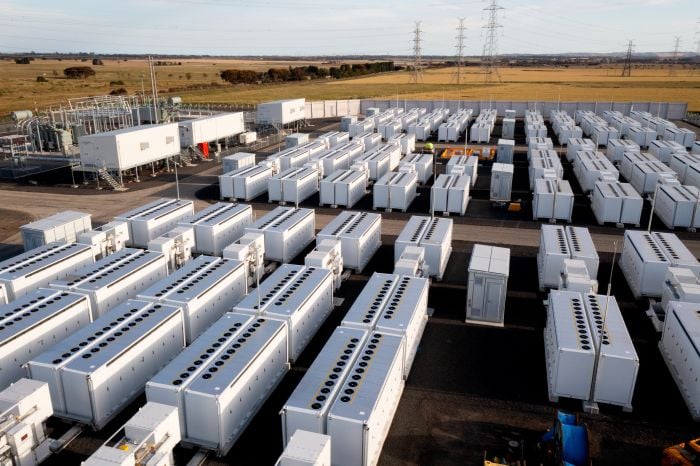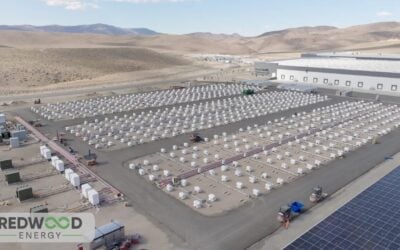
Australia’s national science agency CSIRO has said the country needs to invest into multiple different energy storage technologies at massive scale to achieve its transition to renewable energy.
A new roadmap published today by government agency Commonwealth Scientific and Industrial Research Organisation (CSIRO) highlighted that a 10-14x increase in energy storage capacity will be needed in the National Electricity Market (NEM) in the years 2025 and 2030. Australia is targeting net zero emissions by 2050.
Enjoy 12 months of exclusive analysis
- Regular insight and analysis of the industry’s biggest developments
- In-depth interviews with the industry’s leading figures
- Annual digital subscription to the PV Tech Power journal
- Discounts on Solar Media’s portfolio of events, in-person and virtual
The 200-page Renewable Energy Storage Roadmap discusses how storage can facilitate the uptake of renewable energy, enhance stability and reliability of the grid, and support industries. To do so at the required scale will mean reliance on diverse technologies beyond the accepted duo of lithium-ion battery storage and pumped hydro, it said.
“Over the long-term storage will accelerate the integration of renewables, enhancing grid stability and reliability, and supporting decarbonisation of industries. There is no silver bullet for reaching net zero so we need multiple shots on goal, like from renewables, batteries, hydrogen, thermal storage, pumped hydro, sustainable aviation fuels and a host of new science-driven technologies,” CSIRO chief executive Larry Marshall said today.
Colleague Dietmar Tourbier noted that while battery energy storage system (BESS) technology may be the “best option” for local and short-duration electricity storage, thermal or heat storage such as steam may be a better fit for heat intensive industries, for example.
While both government and industry have realised that storage of energy has a major role to play, there are still “significant knowledge gaps”, while the acceleration of tech commercialisation and scale-up across a “diverse portfolio of energy storage technologies” will require co-investment, Tourbier, CSIRO’s director of energy said.
By 2050, the NEM and Western Australia energy markets will be dominated by utility and distributed solar PV and wind as well as dispatchable energy storage resources, with black and brown coal and event peaking gas plants almost or entirely off the systems.
CSIRO’s roadmap builds on the modelling and assumptions of the Australian Energy Market Operator (AEMO), which has identified a need for 44-96GW/550-950GWh of dispatchable storage in the NEM and 12-17GW/74-96GWh in Western Australia, the other major connected energy market, by the half-Century mark.
In every scenario modelled, there is no getting away from the requirements for energy storage to greatly increase. However one of the major challenges ahead is the lack of bankable mature energy storage technologies beyond lithium-ion and pumped hydro energy storage (PHES) on the market today.
“Reaching net zero is a wicked challenge, we need a robust pipeline of projects that use diverse technologies supported by industry, government, research and community stakeholders to ensure that no industry and no Australian is left behind,” CSIRO CEO Larry Marshall said.
A February report by the AEMO came to a similar conclusion, identifying the “urgent need” for investment in long-duration energy storage (LDES) technologies as well as into new generation resources and transmission infrastructure
The CSIRO ‘Renewable energy storage roadmap’ can be downloaded here.
AU$16.9 billion opportunity for battery value chain by 2030
Marshall identified that a combination of a long-term view and collaboration across industry and with government will be needed to get there. The roadmap was developed with input from government and more than 50 industry organisations.
It also highlights that the role the energy storage industry can play in reaching net zero is not just a social, technical and economic challenge, but also represents opportunities that can be captured.
That resonates with the thrust of another recently published report, ‘Charging ahead: Australia’s battery powered future,’ which was commissioned by the Future Battery Industries Cooperative Research Centre (FBICRC).
Produced by consultancy Accenture, the report found that there is an opportunity for the Australian battery industry to create AU$16.9 billion (US$11.32 billion) economic value by 2030. This will however require decisive action from the likes of government, industry and academic institutions through the country’s National Battery Strategy, it said.
Another Accenture-prepared report, for the government of Queensland, found that that Australian state’s best opportunities for creating a vertically integrated battery value chain lie in the area of vanadium redox flow battery (VRFB) technologies.
With Queensland rich in the metal-based electrolyte’s raw materials, the government has already pushed ahead with supporting companies in that sector and committed to the construction of a VRFB electrolyte production plant – in addition to supporting downstream lithium-ion BESS and PHES developments.
The full FBICRC ‘Charging ahead’ report was published earlier this month and can be found here.
Energy-Storage.news’ publisher Solar Media will host the 1st Energy Storage Summit Asia, 11-12 July 2023 in Singapore. The event will help give clarity on this nascent, yet quickly growing market, bringing together a community of credible independent generators, policymakers, banks, funds, off-takers and technology providers. For more information, go to the website.






